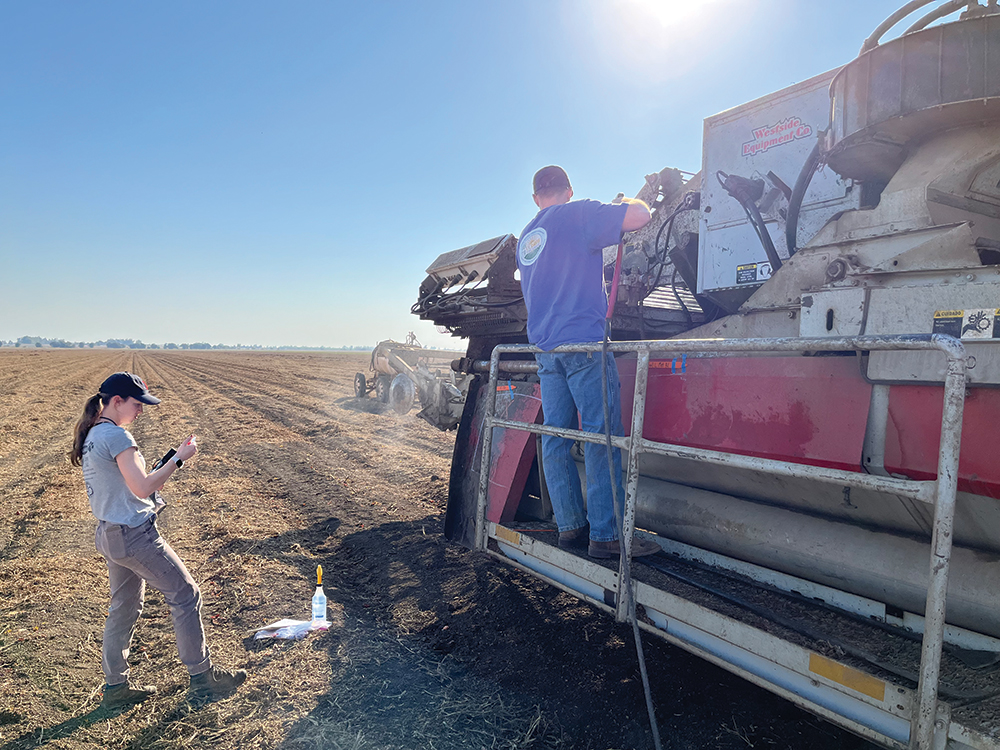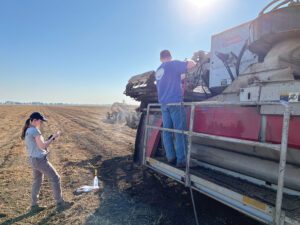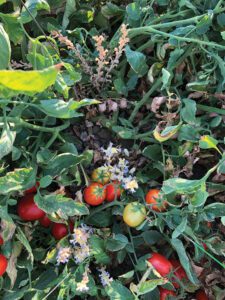
Mar 27, 2025Weed Management critical for disease control
As weeds are a continual challenge and cost for growers, proper planning on how to manage them is critical.
“Weeds are a year-in, year-out problem,” said Brad Hanson, a cooperative Extension weed specialist in UC Davis’ Department of Plant Sciences Invasive Weed & Restoration Ecology Lab. “Weeds are always in the top five issues of growers. If you’re a farm or crop manager, weeds are right in front of you every week of the year.”
At UC Davis’ Hanson Weed Management Lab, Hanson, who is an authority on weed control, and his colleagues study chemical and non-chemical weed control in agricultural crops focusing on herbicide performance, resistance, crop safety and environmental impact in tree fruit, tree nuts, vineyards and processing tomatoes.
“Specific weeds are going to vary depending where you are in the state and on details of your system, but one of my messages always with growers of any of these crops is to know what weeds you’re trying to control and make thoughtful and specific decisions about how best to control them in each field,” he said.

In processing tomatoes, branched broomrape is currently a huge weed of concern. Broomrape is an obligate parasite that’s unable to survive on its own. Instead, this weed obtains all of its water and nutrients from its host by attaching itself to a plant’s root system, forming a large underground structure that eventually sends multiple stems above ground that quickly flower and produce large amounts of seed.
Tomato Threat
Branched broomrape has been reported in only a handful of California counties, and researchers want to keep it from spreading. As a federal and state quarantine pest, broomrape-infested fields are subject to regulatory action that can include crop destruction and hold orders on the field to reduce the risk of spreading the problem to new fields.
“Because of its regulatory status, there’s a huge economic challenge. Even though the weed density is relatively low at this point in time, the ramifications are really large,” Hanson said. “It’s probably the No. 1 issue of processing tomatoes because of the quarantine status.”
It’s not yet spread through the whole state, but there is substantial risk of spreading it from the currently impacted counties to the rest of the billion-dollar tomato industry in California.”
One of Hanson’s graduate students has spent six years working on herbicide approaches to manage the weed, and the lab has helped develop protocols that provide strong control.
“We’ve been doing a lot of work with evaluating and fine-tuning those protocols and talking to growers about that program,” Hanson said. “That’s been starting to have a real impact.”
In 2022, the tomato industry obtained a special local needs label for an alternative application method for Matrix herbicide to manage broomrape. This was partially based on Hanson’s research, and growers have now experienced a couple seasons with the treatment and seen favorable results, Hanson said.
Hanson’s lab is working on other chemical approaches for broomrape management that researchers hope can be registered in the future.

broomrape is currently a huge weed of concern.
Limiting Exposure
To reduce the risk of moving broomrape seed from infested fields to non-infested fields, a postdoctoral researcher has worked closely with UC Davis plant pathology collaborators on equipment sanitation practices. The overall goal of the work is to reduce the spread of seed and other pest propagules that can move with soil.
Sanitation should start with debris removal and cleaning steps, and can end with application of chemical sanitizers. Researchers are also developing best management guidelines that can be applied to grower and processor equipment, including harvesters, trucks, trailers and tillage equipment, to reduce seed movement via soil or on plant material.
“There’s a lot of dirt and plant debris that can accumulate on farm equipment,” Hanson said. “Any of that could have seeds of weeds like branched broomrape or propagules of plant pathogens such as various races of Fusarium.”

Because the risk of spreading new or uncommon soilborne problems such as weed seed and diseases is significant in highly mechanized and consolidated cropping systems, Hanson and collaborators are studying sanitizing chemicals’ effect on broomrape as well as key plant pathogens.
“The main focus of the sanitation work is to reduce the risk of rapid and long-distance spread of serious pest problems through the industry,” Hanson said. “While broomrape is the current priority in the tomato industry, our team’s work on equipment sanitation is broadly applicable to California’s intense specialty crop production systems.”
Growers should actively scout and identify weeds, plus possess some understanding of weed life cycles and biology. A second step involves considering tools to manage individual weeds, whether through chemical or physical mechanism control, then using the tools targeting the correct weed stage and the right time.
After weeds are identified, the grower must consider control levels. In some cases, extremely high control is necessary to prevent competition from injuring crops. In other cases, lower levels of control may be sufficient. Because of low commodity pricing, particularly in almond and walnut crops, and the need to reduce input costs, Hanson said he’s been seeing much lower use of herbicides in the last handful of years.
During times of high prices where control expectations were 100% weed control, lower levels of 95% may be sufficient to reduce crop impact in other times, he said.
“It’s really just smart decision making,” Hanson said. “It’s an across-the-board management kind of approach to understand what you’re trying to do in terms of weed management: Make a plan, and then implement that plan extremely well,” Hanson said.
Hanson warns growers against using the wrong tool.
“Using the wrong tool to do the job, no matter how big the hammer you have, is not going to get you success.” Hanson said. “You want to use the right tool for the job. You need to know what you’re doing and what tools you have, and then use the tools appropriately and well. That’s true of weed management and farm management more broadly.”
No one-size-fits-all solution for weeds exists. Growers and field managers should know their weeds, employ best tools at their disposal and set control goals. Trade-offs can be in terms of cost, quality, time and fit into a grower’s overall farming context.
“It’s just a part of the landscape that we’ve got to manage weeds,” Hanson said.
— Doug Ohlemeier, Assistant Editor
















